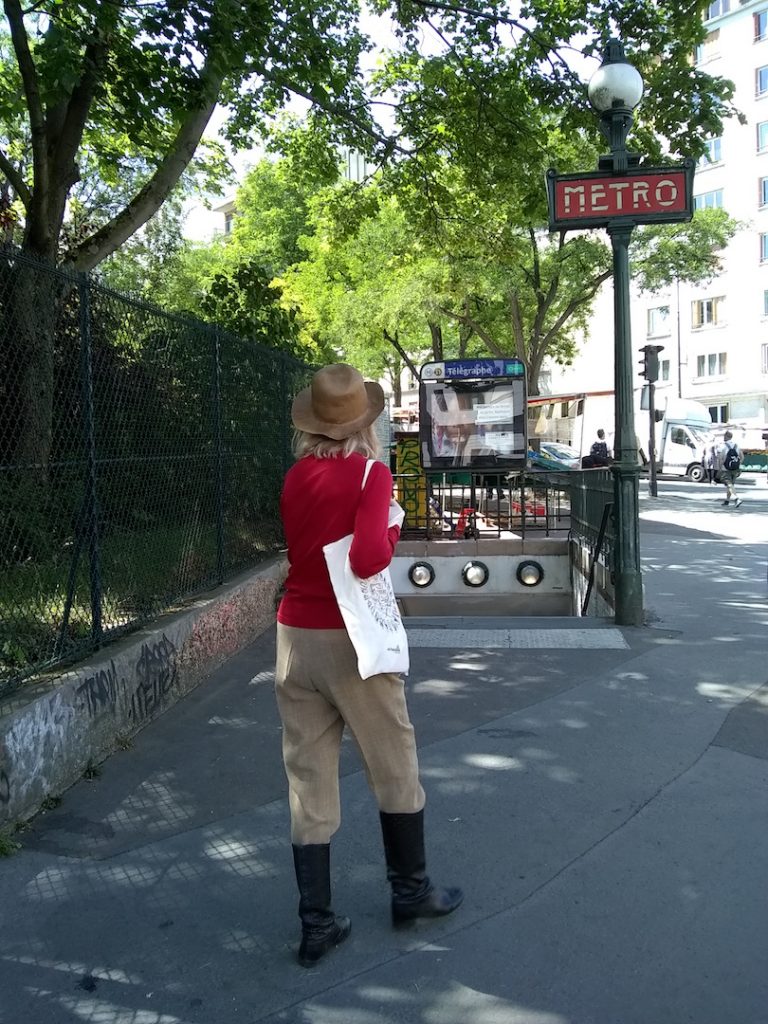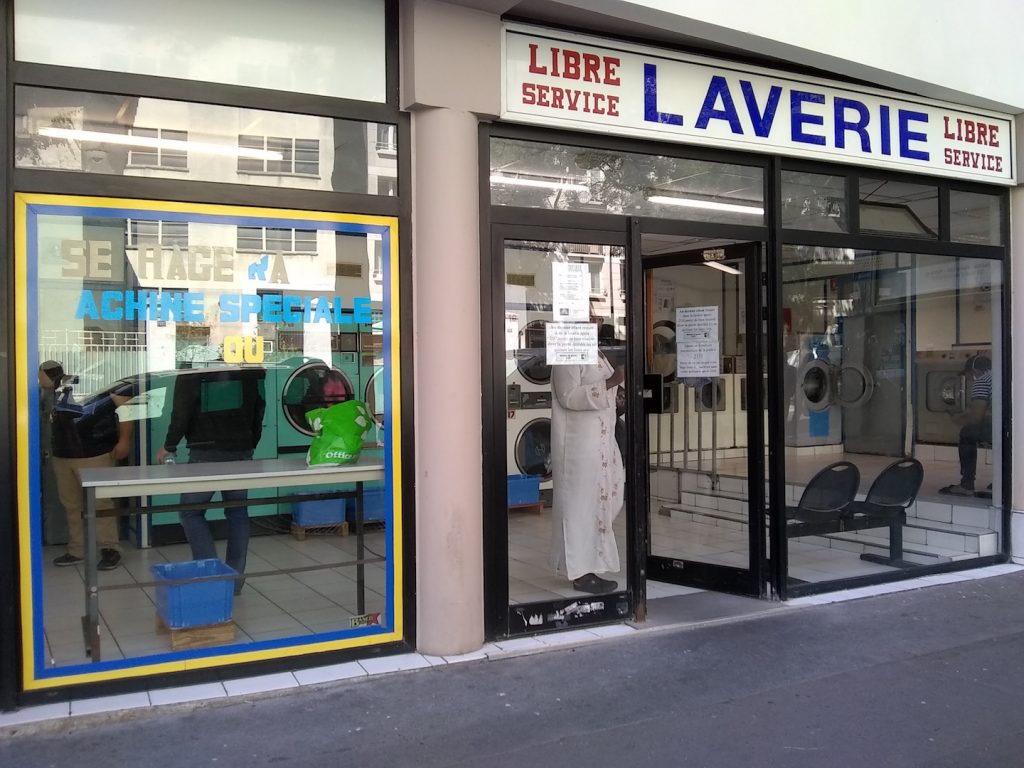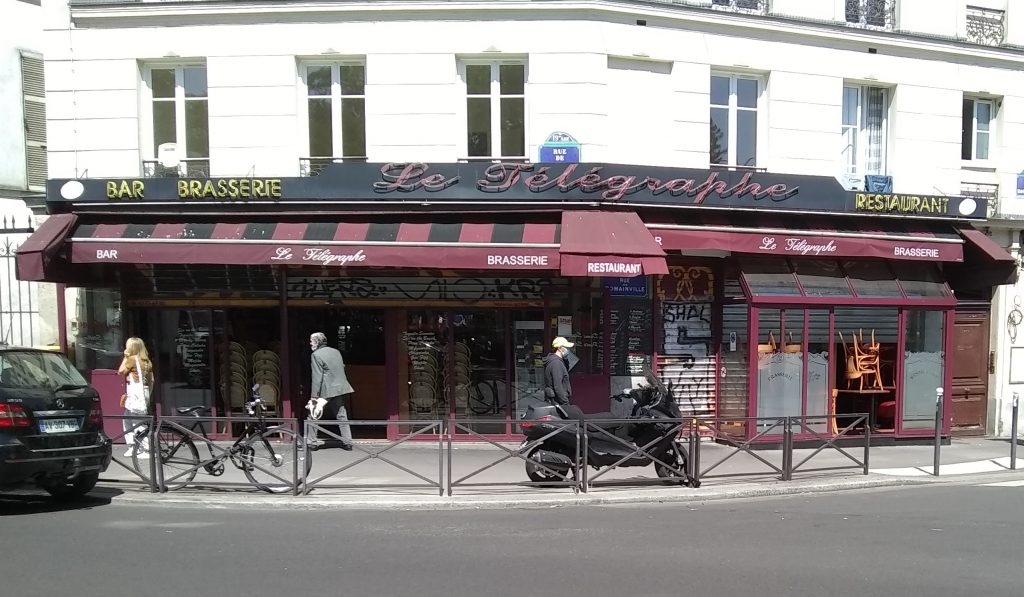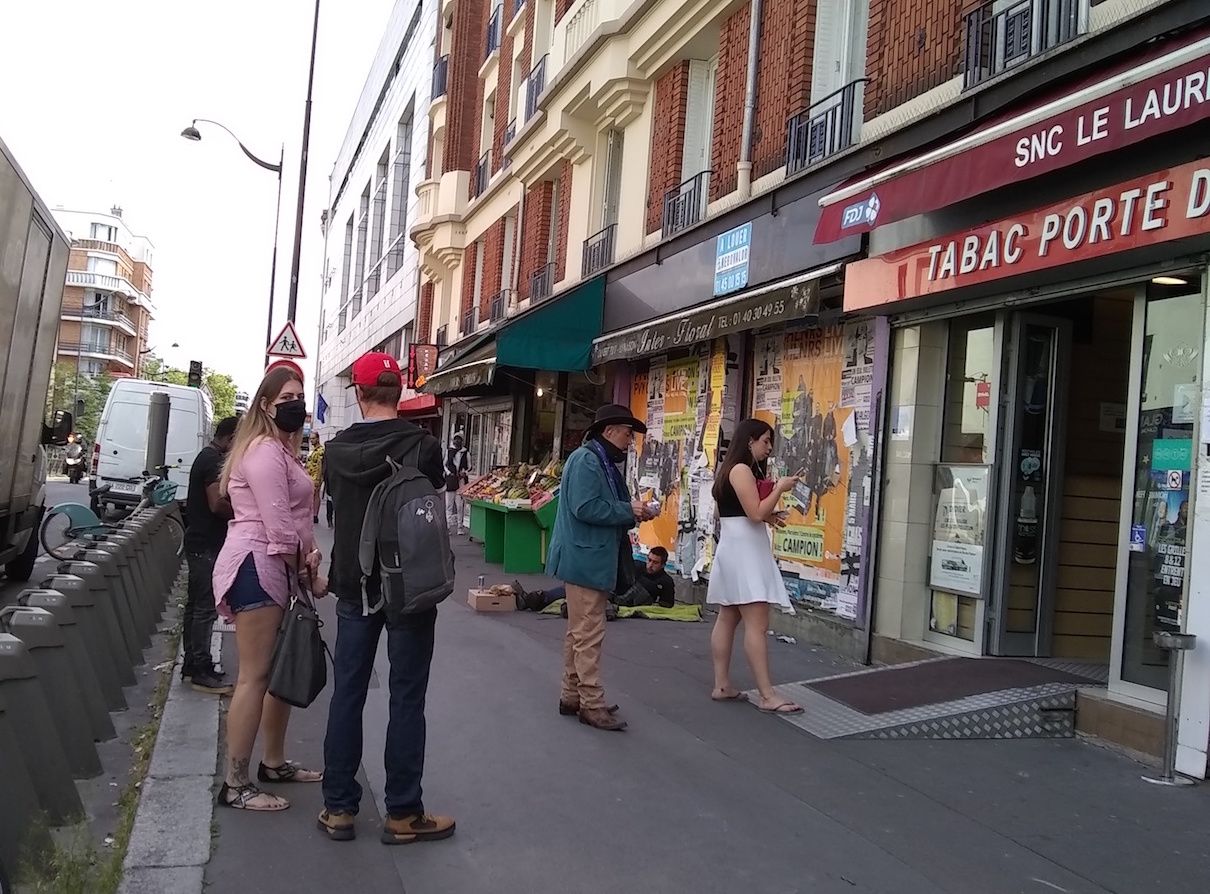BY JUDITH MAHONEY PASTERNAK | It’s cool for a mid-May afternoon, barely above 50 degrees. I’m wearing a sweater under my safari jacket. But for the first time in two months, I’m outside without a signed homemade certificate giving my name, address and date of birth, along with the reason for, and expected duration of, the outing. It’s the second day of the Paris déconfinement, and all the other people on the street were similarly and suddenly freed yesterday.
So how are we doing? What are we doing? How do the individuals who make up an entire population look and act the day after they’ve been freed, en masse, from a protracted and unprecedented confinement? How closely can this moment resemble those of our formerly normal lives — and how closely will our déconfinement resemble that in places that had no single central government setting uniform rules for all?
Springtime in Paris
The answer to both questions seems to be, not much. Paris deconfined is, so far, very different from the Paris where I’ve lived for almost a decade. And the deconfinement is necessarily different because so was the confinement.
As of March 23, all across France, stores were ordered closed except for those selling essentials — basically, grocery stores and supermarkets, bakeries, pharmacies and tobacconists (well, this is France). People outside without the required certificate were subject to hefty fines. The document listed five permissible reasons for venturing outside, and you had to check one and only one.
You were allowed to go to work at an essential job (if it couldn’t be done from home), shop for groceries or other essentials (see above, although the certificate was silent as to tobacco products); see a doctor for essential medical care; care for an aged or otherwise vulnerable person; and exercise, within strict limits as to duration and distance. Tens of thousands of police were assigned just to check that each pedestrian possessed the document.
In the whole two months I was never asked to show mine, but then, I’m an 80-year-old, fairly gray-haired white woman and often find myself invisible to security personnel. A younger male friend was stopped and asked for it every time he left the house.
One other and unexpected result of the confinement was that the city was suddenly quieter — and more fragrant. With car traffic down to a bare minimum, all we heard was birdsong, and all we smelled was the sweet scents of spring.
But on May 11, France declared the country more or less open again, and the government published a detailed list of new rules differing among locations, according to their rate of infection. Paris remains a hot spot, and this is how the early days of the déconfinement look, indoors and out, especially in and around my quartier, the diverse 20th Arrondissement area at the eastern edge of the Right Bank.
The joint is jumping
By May 12, the day after the reopening, it’s not a ghost town. You have to look before you cross the street again, because traffic is up and running. People in close to normal numbers are on the street, going about their daily business. Fewer than usual seem to be in my age bracket — the deconfinement announcement advised the elderly and vulnerable to continue to stay home as much as possible.
But children are everywhere, babies in slings and baby carriages, toddlers holding their parents’ hands, older ones running on ahead, bumping into strangers and being called back to their parents’ sides. Almost none of them are wearing masks, although some of their parents are.
I am. I’m wearing the one I bought a couple of days ago, when they began to reappear in the tabacs and pharmacies. They had been impossible to get for most of the confinement, and I had made do for two months with the only bandanna I own, washing it every evening and wearing it the next day.
I hated it. It was silky and kept slipping, and I constantly had to decide whether to adjust it, thus touching my face, or just hurry home and hope it would stay more or less in place until I got there. But the government had promised that millions of masks would be available as of May 11 and recommended that we wear them to protect ourselves and others “in situations where social distancing is not possible.”
I found one in a pharmacy two days ahead of time and was glad to get it. It was a big improvement on the bandanna. Now, though, you can get them everywhere, and by the weekend, almost two-thirds of the people on the street are masked.
Social distancing — aye, there’s the rub!
The deconfinement decree also warned that a mask “in no way substitutes for following the rules of social distancing” and advised Parisians to “keep a one-meter distance between yourself and others.” But that recommendation runs athwart a fundamental difference between U.S. cultural norms and a range of European ones, all rooted in the fact that Europe is far more densely populated than the United States.
The population density across Europe is 103 people per square kilometer. The U.S. population density coast to coast is 36 per square kilometer. The greater density colors everything European, although of course it plays out differently in different countries, different parts of each country, and among different social and economic groupings.

The British and other northern Europeans, for instance, may touch each other in public not only less than southern Europeans, but less than Americans do and, accordingly, be far more ready for required social distancing. But in any segment of European society, homes are smaller, people live closer together, and they are, by and large, more committed to the social fabric than in an analogous American one.
Thus it is that, Paris being a mix of northern and southern cultures (especially in my very mixed quartier), keeping at least a meter (or more — the U.S. Centers for Disease Control recommends 6 feet, which is almost 2 meters) between yourself and other people is something of a foreign concept. Inside the shops, where the queues for the cash registers are marked with lines of a little more than a meter for spacing, they tend to respect the rule — in the aisles, not so much.
The queues to get into the stores are everywhere, as they were during the confinement, but now many have signs declaring how many people at a time will be allowed in.
At my neighborhood’s big Monoprix, France’s mega-chain for everything from food to clothes to hardware to books and stationery, the queue was two blocks long on deconfinement day three. A guard was letting in groups of 10 people as similar numbers exited, and just inside the door was an apparently obligatory hand-sanitizer dispenser.
At the small shops, there are no guards, and most often the signs say one or two people can enter.
A few days ago, I stood on line for half an hour to use the ATM inside my bank, and more recently I waited 15 minutes to get a loaf of bread at my local bakery.
But it’s on the streets where that the alienness of social distancing becomes obvious. Even now, told our lives may depend on keeping our distance, with posters everywhere delineating safe distances, many continue to walk as they always have, often two by two or even three by three, giving no quarter as they approach others. Walking “as they always have” often means walking close enough to smell each other as we pass by.

Which isn’t to say that being able to smell a passerby is a rare occurrence here. On the one hand, many Parisians wear enough scent to choke, if not a horse, an asthmatic or allergic person. (Disclosure: I’m among the latter). On the other, even in ordinary times, Parisians tend to be less religiously committed than Americans either to the daily shower or bath or to laundering clothes after only one wearing.
That said, it’s probably different along the Champs Elysées and in the rest of the city’s upscale neighborhoods, but most of those are in the western half of town, and I rarely have reason to go there and certainly don’t now. What I have now is that, after the long, painful loneliness of the confinement, I’m definitely back among my fellow human beings, and glad to be there, smells and all.
La vie social
Not everything has reopened by a long shot. Cinemas, restaurants and cafes remain shuttered (along with the major museums), with the government planning to evaluate letting them reopen at the beginning of June. People are still urged to work from home as much as possible. The Métro is running, but you need a certificate from your employer to ride it during rush hours, and some stations are closed.
So for now, deconfinement means we’re free to visit with friends at home or outdoors, but not in gatherings of more than 10 people. I lunched with one couple on Saturday, going to their home via my first venture onto the Métro. It felt safer than the street — there were few people on the train, and they were rigorously observing social distancing, all sitting as far apart as possible.
Sunday evening I celebrated a friend’s birthday at a dinner for five that got almost riotous, so happy were we all to be in company again. There was tarama (the fish-roe mix called tarama salata in New York’s Greek restaurants) and bread and wine, of course, before we sat down at the table, where we had champagne with the salad, then chicken and beans and rice with another wine, followed by cheese, followed by chocolate mousse… . It was all wonderful. I was somewhat the worse for wear Monday morning.

The host was a jazz musician, a successful one in the sense that at the age of 68 he’s made a living from music for his entire adult life. But for the best part of a decade, his most steady work has been at a small club in Montmartre that holds 30 people when it’s full. He hasn’t worked in three months and can’t really imagine when he will again, because the question remains, what will happen to Paris’s famed restaurants, its neighborhood brasseries and its once three-to-a-city-block cafes?
The government will consider allowing eateries and cafes to reopen at the beginning of June, although how many of them will have survived three months without income (albeit with government support) is an open question. The more difficult question is, how many will be able to operate with only half the former number of tables full at any given moment?
A splinter in my sandal
Yesterday, walking home from the supermarket with a heavy bag of groceries, I felt something sharp under the sole of my foot. When I leaned against the nearest tree to try to fish it out, still clutching the bag because I didn’t want to set it down on the sidewalk, two young men stopped to ask if I needed help. I had a microsecond to decide whether to say yes, at this moment when close contact with a stranger can be dangerous.
I opted for what I’d have done six months ago. “Oui, merci,” I said, and handed one of them the bag. He held it while I shook out the sandal. I took the bag back. We smiled at each other, I from behind my mask, and I thanked them again and walked home.
I was still smiling, even while I scrubbed my hands with sanitizer — call it the upside of being where some people find social distancing hard to grasp.
The old Paris? Not yet, maybe never. But Paris, still.
A native New Yorker now permanently resident in Paris, Mahoney Pasternak is a longtime writer and journalist and author of “Timeless Places: Paris” (2000, Michael Friedman Publising Group), among other works.


Bonjour ou bon soir, Judy~
Joyce Smith here. (Here being Tucson where I’ve lived for 25+ years.) Am reaching out as recently I reconnected with Angel/Merle via email, and your name came up. She said after her marriage to Dominic Chianese, she lost her 2 friends ~ you & I ~ by being forbidden to ever speak to us again. Well, she & I are speaking quite a bit now, via email. Fortunately, long-divorced from him, and long-married to a good man who loves her 3 children, 6 grand-children, 1 great-grand (so far) like his own.
Fascinating to see something of your path. We bumped into each other on some (Village?) street many years ago; you were with a woman. We barely spoke. Can’t recall why. Did you know I organized a women’s dinner & theater group for many years in NYC? Kind of have one here now.
My sincere condolences on the loss of Adam.
I can’t imagine.
Did you ever bump into Lester Waldman in Paris? Probably not, but I can’t help asking. A whole ‘nother story, from “that” era. Doubt he’s survived. A book of his Barcelona photos survives on the I’net. I haven’t been back there since 1962 (spent ’62-’63 bumming around Europe), though I have been to Greece & Israel since then.
Hope we may reconnect, joyce txn smth a t
gee mail d o t com. Please stay well.
Distance hugs~
Joyce